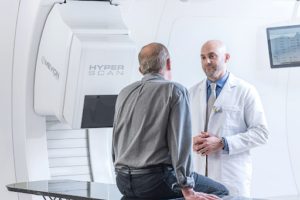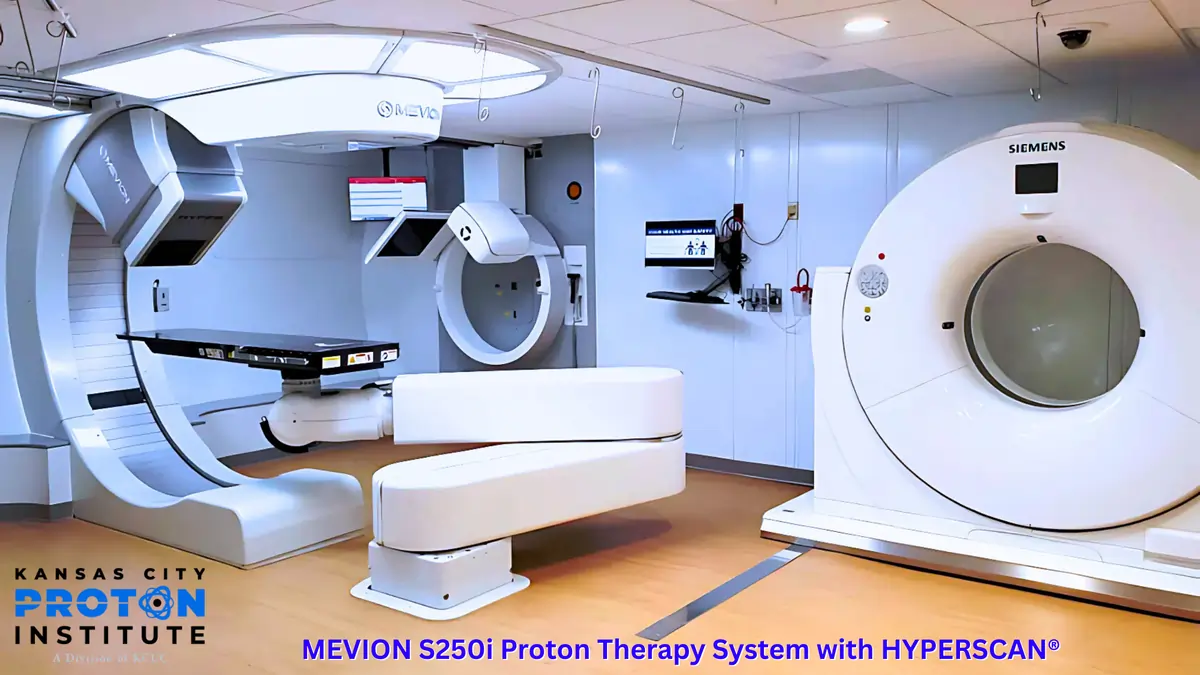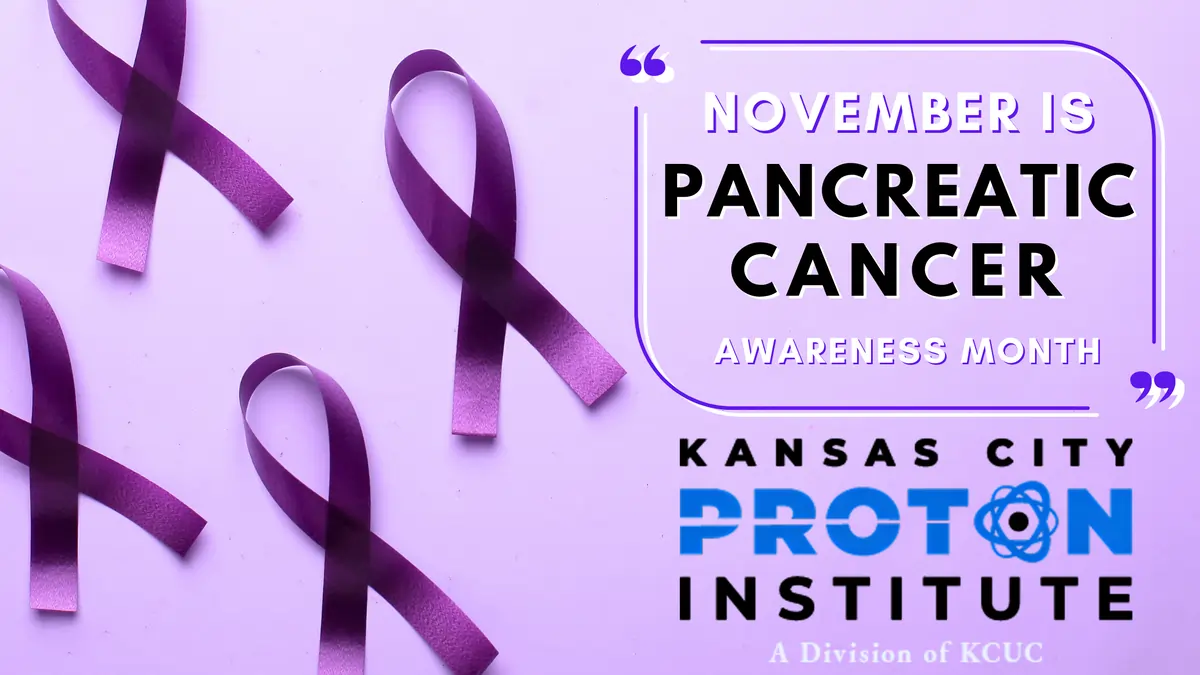
X-Ray vs. Proton Therapy Treatment for Prostate Cancer With KCPI
Prostate cancer is one of the most common cancers among men, and selecting the most effective treatment option is crucial for ensuring the best possible outcomes. Radiation treatment for prostate cancer is quite common, with traditional X-ray radiation therapy (also known as photon therapy) and proton radiation therapy being two of the primary modalities. Each has its own set of advantages and considerations, and understanding these differences can help patients make informed decisions.
Traditional X-Ray Radiation Therapy
How X-Ray Radiation Therapy Works
Traditional X-ray radiation therapy, or photon therapy, has been a cornerstone in cancer treatment for decades. It uses high-energy X-rays to target and kill cancer cells. These X-rays pass through the body, delivering energy to both the tumor and the surrounding healthy tissues.
Advantages of X-Ray Radiation Therapy for Prostate Cancer
- Proven Track Record: X-ray radiation therapy has a long history of effectiveness and is well-studied, providing a wealth of data on outcomes and side effects.
- Availability: This form of therapy is widely available in most medical facilities, making it accessible to a larger population.
- Cost: X-ray therapy tends to be less expensive than proton therapy, which can be a significant consideration for many patients.
Disadvantages of X-Ray Radiation Therapy
- Collateral Damage: Because X-rays pass through the body, they can affect healthy tissues before and after hitting the tumor, leading to potential side effects such as bowel, bladder, and erectile dysfunction.
- Precision Limitations: While advances have been made in targeting tumors more precisely, X-ray therapy still lacks the pinpoint accuracy that newer technologies offer.
Proton Therapy for Prostate Cancer
How Proton Therapy Works
Proton therapy is a more advanced form of radiation treatment for prostate cancer and other cancers that uses protons instead of X-rays. Protons are charged particles that can be controlled more precisely, allowing for targeted delivery of radiation to the tumor with minimal impact on surrounding healthy tissues.
Advantages of Proton Therapy
Precision: Protons can be controlled to stop at the tumor site, reducing radiation exposure to surrounding healthy tissues. This precision can lead to fewer side effects.
Reduced Side Effects: The targeted nature of proton therapy means less collateral damage, potentially translating to fewer complications such as bowel and bladder issues and better preservation of sexual function.
Effective for Complex Cases: Proton therapy is particularly beneficial for treating tumors located near critical structures where minimizing damage to healthy tissue is paramount. Because the prostate is close to the testicles, the anus, and nerves that control bladder, bowel and sexual function, proton therapy can be beneficial.
Disadvantages of Proton Therapy
Cost and Availability: Proton therapy is generally more expensive than traditional X-ray therapy and is available at fewer medical centers, which may limit access for some patients.
Long-Term Data: While promising, proton therapy does not yet have as extensive a track record as X-ray therapy, though early results are encouraging.
Comparing X-Ray and Proton Radiation Therapy Treatments
The choice between traditional X-ray radiation therapy and proton radiation therapy depends on several factors, including the specific characteristics of the patient’s cancer, the availability of treatments, and financial considerations.
Clinical Effectiveness
Both X-ray and proton therapy are effective at treating prostate cancer. However, the increased precision of proton therapy can be particularly advantageous in minimizing side effects, which can significantly impact a patient’s quality of life.
Side Effects
Proton therapy generally offers a better side effect profile due to its precision. For patients concerned about the potential for bowel, bladder, and sexual dysfunction, proton therapy may be the preferable option.
Accessibility and Cost
X-ray therapy is more widely available and typically less expensive, making it a more accessible option for many patients. In contrast, proton therapy, while potentially offering superior outcomes in terms of side effects, is less accessible and more costly.
Proton Therapy Available at Two Convenient KC Locations
 Luckily, if you live in Kansas City, you have two options for proton therapy. Hospital-based proton therapy at The University of Kansas Cancer Center downtown and Kansas City Proton Institute (KCPI) in Overland Park. KCPI is the first to bring office-based proton therapy to Kansas City.
Luckily, if you live in Kansas City, you have two options for proton therapy. Hospital-based proton therapy at The University of Kansas Cancer Center downtown and Kansas City Proton Institute (KCPI) in Overland Park. KCPI is the first to bring office-based proton therapy to Kansas City.
Advantages of Office-Based Proton Therapy
At the Kansas City Proton Institute in Overland Park, we offer the same level of care as hospital-based facilities but in a more convenient and cost-effective setting.
Convenience
Because it is an office-based facility KCPI can offer other advantages that a hospital can’t – particularly convenience and a reduced time commitment. There’s no need to drive downtown. Navigating a smaller facility is easier and less stressful too. You can park near the entrance to the facility with no parking fee.
Cost Advantage
Cost is another consideration that many patients don’t think about. Simply put, outpatient oncology programs cost less than hospital-based programs. Why? Hospital-based radiation oncology programs are allowed, by insurers and Medicare, to charge higher rates and facility fees than non-hospital-based programs for the same treatment. Because cancer care is not usually something that is “shopped” for or price compared, most patients have no idea that there is a difference in price for the care they receive.
Hospital-based radiation therapy is usually 20-40% higher (even more if it is an NCI-designated cancer center). It’s perfectly legal. It’s just the way the system works. Cancer care is expensive and if you have a deductible, choosing outpatient care can result in savings of thousands of dollars. Learn more about how we are cutting costs on cutting-edge care.
Both X-ray and Proton Radiation Therapy Are Effective
 Both traditional X-ray radiation therapy and proton radiation therapy offer significant benefits for treating prostate cancer. X-ray therapy is widely available, well-understood, and cost-effective, making it a solid choice for many patients. Proton therapy, with its superior precision and reduced side effects, represents a promising advancement, particularly for those who prioritize minimizing treatment-related complications. You do have a choice when it comes to where you receive your proton therapy in Kansas City.
Both traditional X-ray radiation therapy and proton radiation therapy offer significant benefits for treating prostate cancer. X-ray therapy is widely available, well-understood, and cost-effective, making it a solid choice for many patients. Proton therapy, with its superior precision and reduced side effects, represents a promising advancement, particularly for those who prioritize minimizing treatment-related complications. You do have a choice when it comes to where you receive your proton therapy in Kansas City.
Ultimately, the best radiation treatment for prostate cancer will vary based on individual patient needs, the specifics of their cancer, and practical considerations such as cost and access. Consulting with a radiation oncologist who is experienced in both treatments can provide valuable guidance tailored to each patient’s unique situation.
KCPI is the only office-based proton radiation facility in the Midwest. We’re proud to be able to offer this new type of radiation treatment for prostate cancer and other cancers at a lower cost and with more convenience for our patients. To learn more, give us a call!




